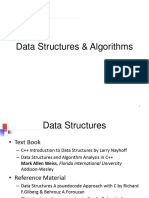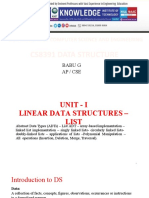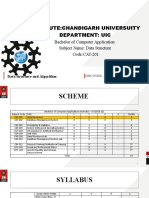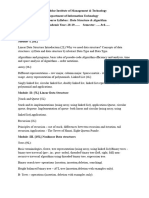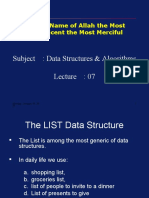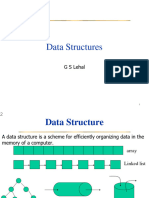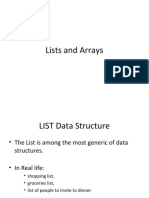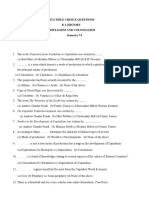0% found this document useful (0 votes)
37 views35 pagesData Structure & Algorithms: Prepared By: Kashafad-Dooja
This document provides information about a Data Structures and Algorithms course being taught at Lahore Garrison University. It includes the instructor contact details, course objectives, prerequisites, and contents to be covered throughout the semester. The document discusses the need for data structures to organize data efficiently and classify common data structures like arrays and lists. It also describes basic list operations like create, insert, remove, get, and more.
Uploaded by
ali razaCopyright
© © All Rights Reserved
We take content rights seriously. If you suspect this is your content, claim it here.
Available Formats
Download as PPTX, PDF, TXT or read online on Scribd
0% found this document useful (0 votes)
37 views35 pagesData Structure & Algorithms: Prepared By: Kashafad-Dooja
This document provides information about a Data Structures and Algorithms course being taught at Lahore Garrison University. It includes the instructor contact details, course objectives, prerequisites, and contents to be covered throughout the semester. The document discusses the need for data structures to organize data efficiently and classify common data structures like arrays and lists. It also describes basic list operations like create, insert, remove, get, and more.
Uploaded by
ali razaCopyright
© © All Rights Reserved
We take content rights seriously. If you suspect this is your content, claim it here.
Available Formats
Download as PPTX, PDF, TXT or read online on Scribd
/ 35

